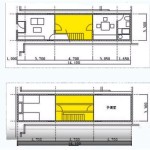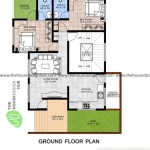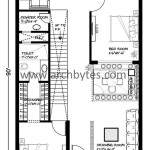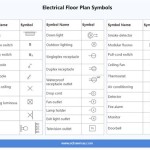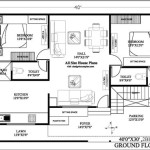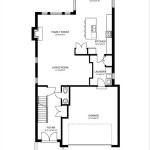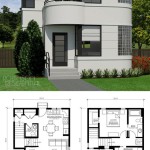Flood Zone House Plans: Navigating Design and Construction in High-Risk Areas
Building in a flood zone presents unique challenges that demand meticulous planning and adherence to specific building codes and regulations. Designing and constructing a house in such an area requires careful consideration of elevation requirements, flood-resistant materials, and appropriate structural systems. Flood zone house plans are not merely architectural blueprints; they are comprehensive strategies for mitigating flood damage and ensuring the safety and longevity of the structure.
Federal, state, and local agencies establish flood zone designations based on the probability of flooding in a given area. These zones are categorized by their level of risk, dictating the specific building requirements that must be met. Understanding the applicable flood zone designation is the first and most crucial step in developing a viable house plan. This determines the base flood elevation (BFE), which is the estimated height to which floodwaters are expected to rise during a base flood event. All habitable areas must be elevated above the BFE, either through elevation of the entire structure or through specific floodproofing measures.
Beyond elevation requirements, flood zone house plans must also address the potential for hydrostatic pressure, wave action (in coastal areas), and erosion. This necessitates the use of durable, flood-resistant materials for structural components, insulation, and exterior finishes. Proper drainage systems and landscaping are also critical for minimizing the impact of floodwaters on the foundation and surrounding property.
Understanding Flood Zone Classifications and Their Implications
The Federal Emergency Management Agency (FEMA) is the primary agency responsible for mapping flood zones across the United States. These maps, known as Flood Insurance Rate Maps (FIRMs), are essential resources for determining the flood risk associated with a particular property. Flood zones are categorized using a variety of designations, each with its own set of building requirements.
High-Risk Flood Zones (Zones A, AE, AH, AO, VE, and V): These zones are considered to have a 1% or greater chance of flooding in any given year, also known as a 100-year floodplain. Buildings in these zones are subject to stringent elevation requirements and must be designed to withstand the forces of floodwaters. Zone VE, specifically, denotes coastal areas with a high risk of wave action, requiring even more robust construction techniques.
Moderate-Risk Flood Zones (Zones B, X (shaded)): These zones have a lower risk of flooding than high-risk zones, but they are still susceptible to flooding. While elevation requirements may be less stringent, it is still prudent to implement flood-resistant design strategies.
Low-Risk Flood Zones (Zone C, X (unshaded), and D): These zones have a minimal risk of flooding. However, it is important to note that flooding can still occur in these areas, particularly during extreme weather events. While building regulations may be less restrictive, incorporating flood-resistant features can still provide added protection.
The specific building requirements for each flood zone vary depending on local ordinances and state regulations. However, common requirements include elevating the lowest floor (including basement) above the BFE, anchoring the structure to prevent displacement, using flood-resistant materials below the BFE, and ensuring proper drainage.
Key Design Considerations for Flood Zone House Plans
Developing a successful flood zone house plan requires a holistic approach that considers both the structural integrity of the building and its ability to withstand the forces of flooding. Several key design considerations are paramount:
Elevation Techniques: Elevating the structure above the BFE is the most effective way to mitigate flood damage. Several elevation techniques can be employed, including:
Pile Foundations: These foundations use deep piles driven into the ground to support the structure above the flood level.
Pier Foundations: Similar to pile foundations, pier foundations use concrete or masonry piers to elevate the structure.
Stem Walls: Stem walls are short walls that raise the building above the ground. This method is more suitable for areas with shallow flood depths.
Fill: Raising the site with compacted fill can elevate the ground level above the BFE. This method requires careful engineering to ensure stability and proper drainage.
Flood-Resistant Materials: Selecting appropriate materials is crucial for minimizing damage from floodwaters. Flood-resistant materials do not degrade or deteriorate when exposed to water for extended periods. Examples of flood-resistant materials include:
Concrete and Masonry: With proper sealing and reinforcement, concrete and masonry can provide a durable and flood-resistant foundation.
Closed-Cell Foam Insulation: Unlike open-cell foam, closed-cell foam does not absorb water, making it a suitable insulation material for flood-prone areas.
Fiber Cement Siding: Fiber cement siding is resistant to water damage, rot, and insects.
Treated Lumber: Lumber treated with preservatives can resist decay and insect infestation, even when exposed to moisture.
Floodproofing Techniques: In addition to elevation and flood-resistant materials, floodproofing techniques can further enhance the protection of the structure. These techniques include:
Dry Floodproofing: This involves sealing the building to prevent floodwaters from entering. This method is typically used for commercial buildings and requires careful engineering to withstand hydrostatic pressure.
Wet Floodproofing: This involves allowing floodwaters to enter the building, but designing the structure to minimize damage. This method typically involves raising electrical and mechanical systems above the BFE and using flood-resistant materials in lower areas.
Sump Pumps: Sump pumps are used to remove water that may accumulate in the basement or crawl space.
Backflow Valves: Backflow valves prevent sewage from backing up into the building during a flood event.
Navigating the Regulatory Landscape for Flood Zone Construction
Building in a flood zone involves a complex regulatory landscape that requires careful navigation. Obtaining the necessary permits and approvals can be a time-consuming and challenging process. Working with experienced professionals, such as architects, engineers, and floodplain managers, is essential for ensuring compliance with all applicable regulations.
FEMA Regulations: FEMA sets the minimum standards for floodplain management, but local jurisdictions may have more stringent requirements. Understanding FEMA regulations is the foundation for developing a compliant house plan.
Local Building Codes: Local building codes typically incorporate FEMA regulations and may add additional requirements specific to the local environment. These codes cover aspects such as elevation requirements, flood-resistant materials, and structural design.
Flood Insurance Requirements: If the property is located in a high-risk flood zone, flood insurance is typically required by mortgage lenders. Understanding flood insurance requirements is essential for ensuring that the building meets the necessary criteria for coverage.
Permitting Process: The permitting process for flood zone construction typically involves submitting detailed plans and specifications to the local building department. The plans will be reviewed to ensure compliance with all applicable regulations. Inspections will be conducted during construction to verify that the building is being constructed according to the approved plans.
Variance Requests: In some cases, it may be necessary to request a variance from the local building department. A variance is a deviation from the standard regulations. Variance requests are typically granted only in limited circumstances and require a compelling justification. For example, if strict adherence to the BFE would create a hardship, a variance may be considered.
National Flood Insurance Program (NFIP) and Community Ratings System (CRS): The NFIP provides flood insurance to homeowners and businesses in participating communities. The CRS is a voluntary program that incentivizes communities to implement floodplain management practices that exceed the minimum NFIP requirements. Communities that participate in the CRS receive reduced flood insurance rates for their residents. Understanding the NFIP and CRS can help homeowners make informed decisions about flood insurance and flood mitigation.
Successfully constructing a home in a flood zone demands a comprehensive understanding of flood risks, meticulous planning, and adherence to stringent building codes. By carefully considering elevation techniques, utilizing flood-resistant materials, and implementing appropriate floodproofing measures, homeowners can mitigate the potential for flood damage and create a safe and resilient living environment.

10 Best Flood Zone House Plans Ideas

Flood Zone Designs N House Design Group

Flood Zone Designs N House Design Group

How To Design A Flood Proof House

Elevated Piling And Stilt House Plans Coastal From Home

Flood Plain House

Flood Zone Houses An Ideabook By Mo

Flood Proof House Design Brisbane Dion Seminara Architecture

Flood Zone Houses An Ideabook By Mo

How Can Architecture Combat Flooding 9 Practical Solutions Archdaily

